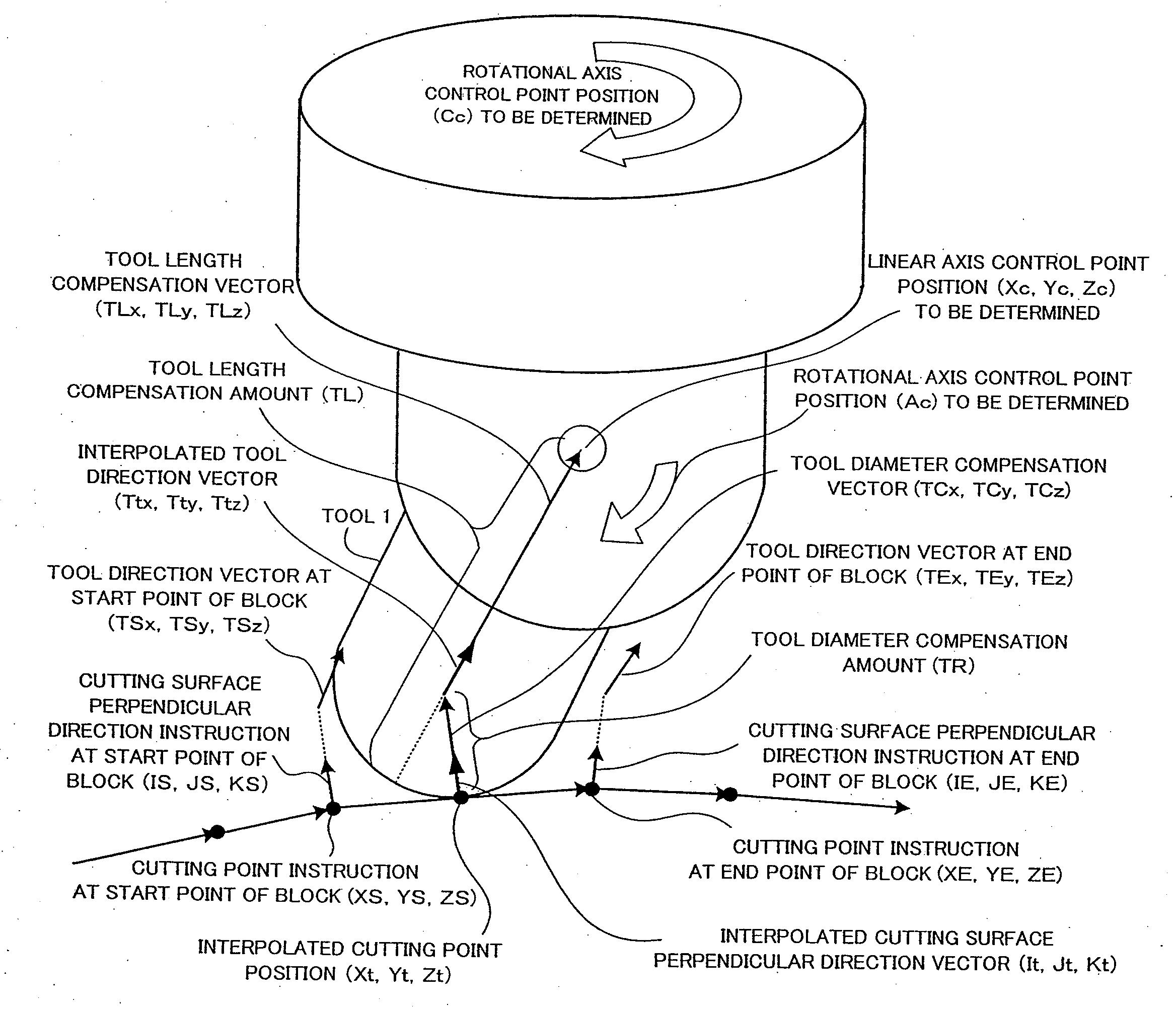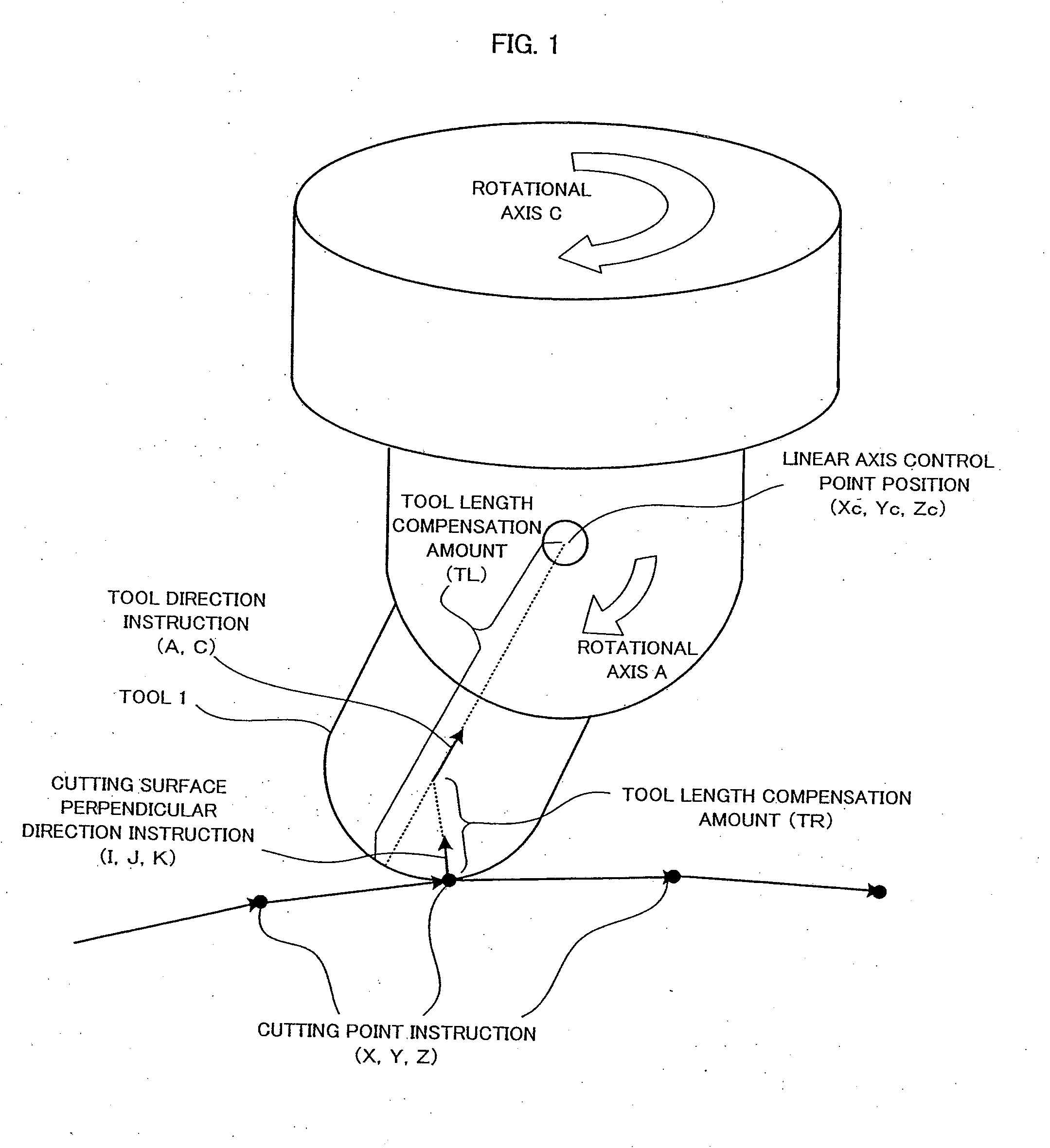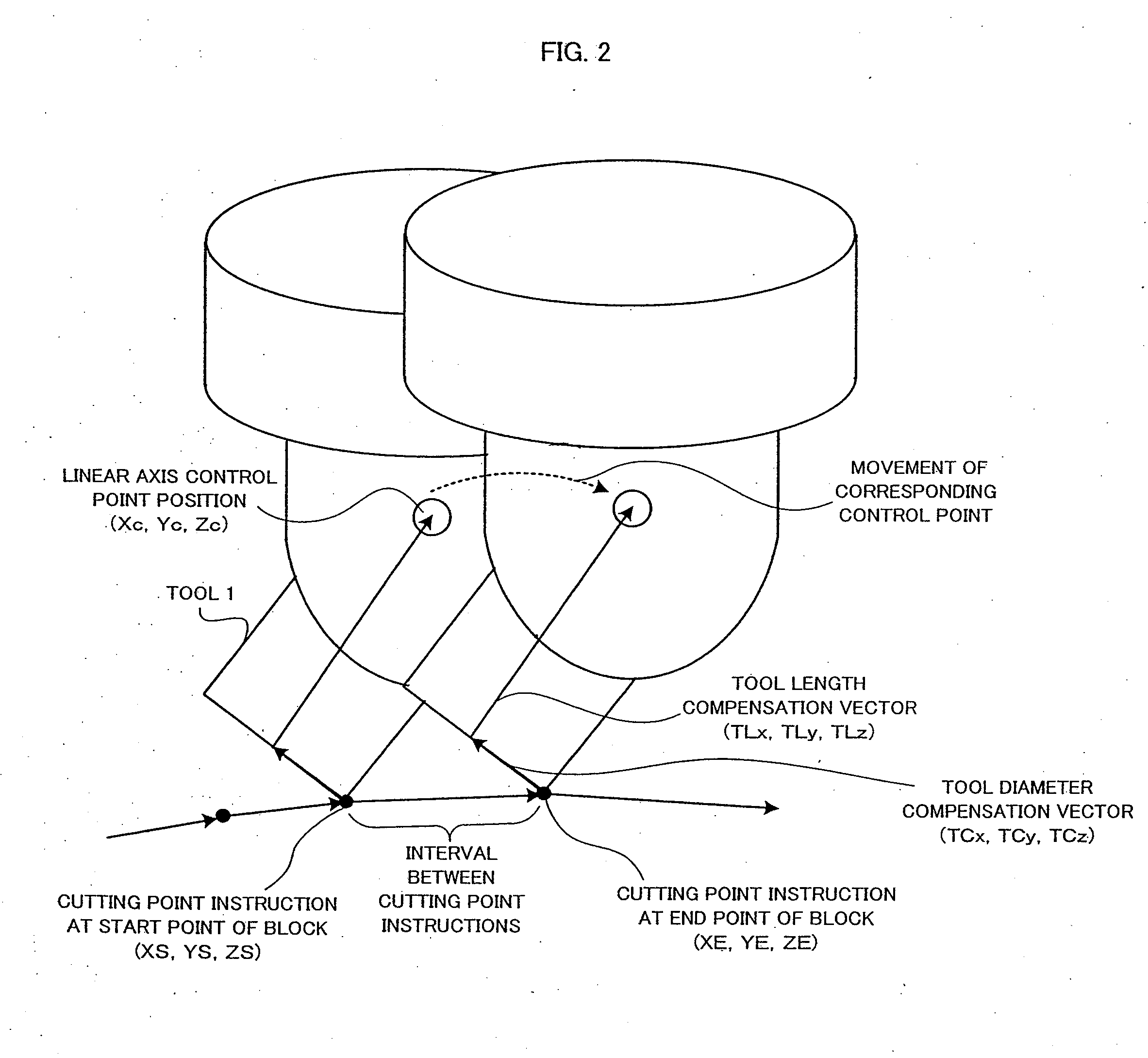Numerical control method for five-axis processing machine
a technology of processing machine and numerical control method, which is applied in the direction of electric programme control, program control, instruments, etc., can solve the problems of excessive cutting into processing objects, unstable operation, and restricted speed of movement, so as to prevent unstable operation and prevent excessive cutting
- Summary
- Abstract
- Description
- Claims
- Application Information
AI Technical Summary
Benefits of technology
Problems solved by technology
Method used
Image
Examples
first embodiment
[0095]To begin with, a numerical control method according to the present invention which eliminates operational instability in the proximity of the singular point 1 will be described with reference to FIG. 12 and FIG. 13.
[0096]FIG. 12 is a diagram describing a process for determining a singular point 1, and a process for avoiding unstable movement when the singular point 1 is determined.
[0097]As described previously, when the interpolated cutting surface perpendicular direction vector (It, Jt, Kt) is determined and the interpolated tool direction vector (Ttx, Tty, Ttz) is determined, then the angle α formed between these two vectors is found and it is judged whether or not this angle α is smaller than a previously set parameter value (Prm(α)). If the angle α is smaller than the set value (Prm(α)), then this means that the front end plane of the square end mill or the radius mill, and the processing plane are in a state close to parallel, and hence there is a high possibility of sati...
second embodiment
[0131]FIG. 14 is an illustrative diagram of processing for determining a singular point 2 and processing for avoiding movement which causes excessive cutting when a singular point 2 has been determined, as implemented in a numerical control method according to the present invention.
[0132]The second embodiment relates to an example where the tool used is a ball end mill. In this FIG. 14, since the tool length compensation vector (TLSx, TLSy, TLSz) at the start point of a block and the tool length compensation vector (TLEx, TLEy, TLEz) at the end point of the block are close together in the proximity of a singular point 2, then for the sake of convenience, they are represented by the same arrow and position. Similarly, since the linear axis control point (XSc, YSc, ZSc) at the start point of a block and the linear axis control point (XEc, YEc, ZEc) at the end point of the block are close together in the proximity of a singular point 2, then for the sake of convenience, they are repres...
PUM
 Login to View More
Login to View More Abstract
Description
Claims
Application Information
 Login to View More
Login to View More - R&D
- Intellectual Property
- Life Sciences
- Materials
- Tech Scout
- Unparalleled Data Quality
- Higher Quality Content
- 60% Fewer Hallucinations
Browse by: Latest US Patents, China's latest patents, Technical Efficacy Thesaurus, Application Domain, Technology Topic, Popular Technical Reports.
© 2025 PatSnap. All rights reserved.Legal|Privacy policy|Modern Slavery Act Transparency Statement|Sitemap|About US| Contact US: help@patsnap.com



